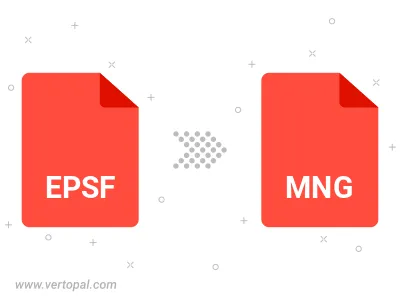Convert EPSF to MNG
Convert EPSF images to MNG format, edit and optimize images online and free.

An EPSF, or Encapsulated PostScript File, is a graphics file format used primarily in the publishing and printing industries for embedding high-resolution images within other PostScript documents. Introduced by Adobe Systems in the late 1980s, EPSF files enable seamless integration of complex visual elements, maintaining quality and device independence. They encapsulate both vector and raster graphics, allowing detailed illustrations and photographs to be embedded without loss of resolution, facilitating professional-quality output across various platforms and devices.
The MNG (Multiple-image Network Graphics) file extension is a specialized format for animated images, originating from the creators of the PNG format. Developed in 1999, MNG supports features like image sequences, transparency, and JPEG data embedding, making it useful for complex animations and graphics interchange. Primarily utilized in web applications and multimedia presentations, it offers efficient compression and high-quality visual representation, catering to the needs of graphics-intensive environments.
Click Choose File and pick the EPSF image required for conversion.
Select tools to convert your EPSF image into a MNG image, then click Convert.
Once the MNG process is finished, the file will be ready for download.

To change EPSF format to MNG, upload your EPSF file to proceed to the preview page. Use any available tools if you want to edit and manipulate your EPSF file. Click on the convert button and wait for the convert to complete. Download the converted MNG file afterward.
Vertopal CLI enables structured conversion from EPSF image to MNG image.